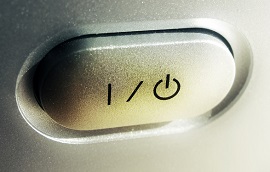One of the most frustrating heating issues during the winter is furnace short cycling. The symptoms of this problem are when the system quickly turns off and on again. When this issue persists, it can not only compromise your comfort level, but also cause excessive wear and tear on your system. If you have only just moved, short cycling could be a new issue, or it could have existed prior to you moving in. It can signal a need for repair, but before you call out a professional, it is possible that you can troubleshoot to ensure that it isn’t a simple issue.
What Causes Short Cycling?
Short cycling is usually an indication of a larger issue. It can be caused by a number of underlying issues. The most common causes include an overheated, faulty motor or thermostat problems. Short cycling can also be caused by an improperly sized system. If your heating system is too large or too small, it can force the system to work harder and more frequently turn off and on. This means that short cycling can be a serious issue that requires a costly repair. Therefore, you need to ensure that short cycling is the reason for your heating issues.
Basic Troubleshooting:
There are some very basic issues that can be mistaken for short cycling, which means that you could end up paying for an unnecessary call out. Fortunately, there are some basic troubleshooting steps that can eliminate simple issues to determine if your problem is short cycling. The most common cause of more frequent switching on and off is a clogged air filter. A dirty filter restricts airflow through the system and can trigger frequent switching. Try replacing the filter to see if this resolves the issue.
If changing the filter does not stop the short cycling, you should check the batteries and settings of your thermostat. Bad batteries can compromise the operation of the unit, disrupting the calls for heat.
Finally, you should try to reboot the heating system. Lower the thermostat settings to below room temperature. This will cancel the need for any heating activity. Disconnect the electricity supply and wait for several minutes before reconnecting and turning up the thermostat. This will reboot the system and may resolve the issue.
Preventing Short Cycling:
One of the most effective ways to prevent short cycling occurring is to ensure that your system is regularly serviced. This type of preventative maintenance will involve a complete equipment inspection. This provides the opportunity for system adjustments and to check for any leaks or dirt. Regular maintenance can not only improve your energy efficiency and prevent short cycling, but it can also reduce the risk of a home fire. Research has shown that the second leading cause of fires in residential homes is a fault with home heating systems. A professional, experienced contractor can identify any fire risks and any vulnerabilities in your system that could cause susceptibility for short cycling or other malfunctions. This could save you a great deal in the long term and provide you with the assurance that your system is safe.
